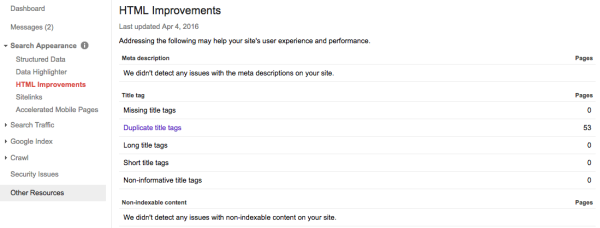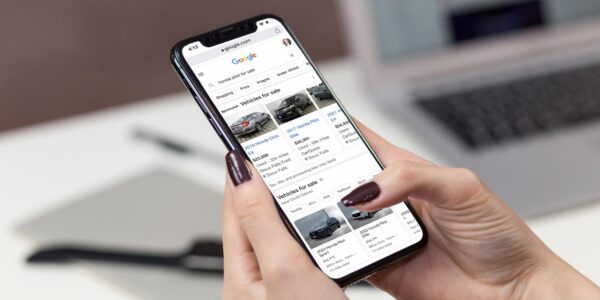
Improve Automotive SEO by Acting Like a Librarian
Improving automotive SEO is all about creating unique content — starting with the titles of your webpages.
Imagine you’re at the library, looking for your favorite author’s latest book. What if that author named every book by the same title? You’d be pretty frustrated as you searched through the card catalog (okay, now they use computers, but you get the idea). Meanwhile, the librarian would be furious.
Google is like a librarian. And so are Google users. They don’t want to see multiple pages from the same website that have the same title. Since mastering SEO is all about making Google happy, you should diversify your page titles to improve your dealership’s SEO.
Why Should I Diversify My Page Titles?
If we’ve learned one thing about search engine optimization (SEO), it’s that Google likes original content.
Google does not like duplicate content. (That’s why keyword stuffing can get you in trouble.)
Cataloging Your Website
Every page on your site has different content, right? Then every page on your site should have its own title and meta description.
There are two reasons for this:
- You can rank for specific keywords for specific pages, meaning you can build an entire page around a certain phrase.
- You don’t want the same title on a bunch of pages you have floating around the Internet. You’ll confuse Google — which is never a good thing — and you’ll confuse users. Your page title will show up in Google search results. Make sure it’s accurate. Also, keep it under 60 characters so it does not get cut off.

Not only do you want to vary your page titles, but you should also keep them under 60 characters. Notice how the lower title is truncated in Google search results.
What Does Google Think?
“Your title provides users and search engines with useful information about your site. Text contained in title tags can appear in search results pages, and relevant, descriptive text is more likely to be clicked on. We recommend reviewing the list and updating the title tags wherever possible.”
That’s straight from Google. The search engine rewards you for properly labeling the various elements of your website with headers, meta descriptions, alt tags, etc. so that your site can easily be navigated and crawled.
We could write a novel about that topic alone. But today, we’ll stick to page titles. Here’s your takeaway: if a page is so similar to another page on your site that it is not worthy of its own title, that page is unnecessary.
How Do I Diversify My Page Titles?
Now that you know why to diversify your page titles for SEO, we’ll get into the how.
Remember how we said there are two reasons for diversifying page titles? We’ll start with building a page around a keyword. It’s the crux of any blogger’s strategy and should also be a focal point for the individual, non-blog pages on your site.
1. Build a Blog Post Around a Keyword
We’ve written plenty of posts (and even eBooks) about automotive SEO. But when it comes to blogging, you start with one idea: building the post around a single keyword or phrase.
Let’s say you want to rank higher for the search term “new cars in Chicago.” Write a post about your new inventory while sprinkling in that keyword. You also should include the phrase in the title of the blog entry, the meta description, and the first sentence.
Build the post around the phrase without making your writing sound clunky. Remember, Google will individually index every single page on your website, including your vehicle detail pages (VDPs), your regular web pages, and your blog entries.
You can use the same keyword more than once, but never use the same title for a blog entry twice.
2. Build a Webpage Around a Keyword
Follow the same philosophy for web pages. Build your pages around a keyword or phrase, but don’t use the same title more than once.
Let’s say you name your used inventory page “Art Vandelay Auto Sales Used Inventory.” That may be a wonderfully accurate title for that page. But don’t simply copy and paste that title for the other pages under that umbrella (which many website administrators do). Do you have a page featuring only used SUVs? You could call it “Used SUVs in Chicago,” a uniquely descriptive term that could also help your longtail keyword ranking.
Google wants “distinct, descriptive titles for each page.” The search engine doesn’t like boilerplate titling systems either (like using “Art Vandelay Auto Sales Used Inventory,” “Art Vandelay Auto Sales New Inventory,” etc.).
This philosophy is a little easier to follow as you’re building your website, but it’s also pretty easy to fix on an existing site.
How Do I Know if I Have Duplicate Page Titles?
You can easily check your site for duplicate page titles by logging into the Google tool called Search Console.
If you’re not familiar with Google Search Console, here are instructions on how to log in. From your console dashboard, click the Search Appearance dropdown, and select HTML Improvements.
Search Console will tell if you have duplicate page titles. If you do, you can go back and change them.
Cornerstone Content
Your ultimate goal with these keywords is to build content around what is called a “cornerstone” page. If you write 12 blog posts about used SUVs, point links from those posts back to your used SUV page (which would be considered a cornerstone page).
This is an important topic that you can read more about here.
Attend Our Automotive SEO Webinar
Diversify your page titles. You’ll get penalized for duplicate titles.
On the other side of the coin, you’ll get rewarded for using different titles because you can focus your pages around a single keyword to improve your ranking.
Want to learn more about automotive SEO? Check out our on-demand video series from 9 Clouds Live.



![Human vs AI A/B Test [Spoiler Alert: Humans Win!]](https://9clouds.com/wp-content/uploads/2024/02/Volvo-dealership-1-600x388.png)


